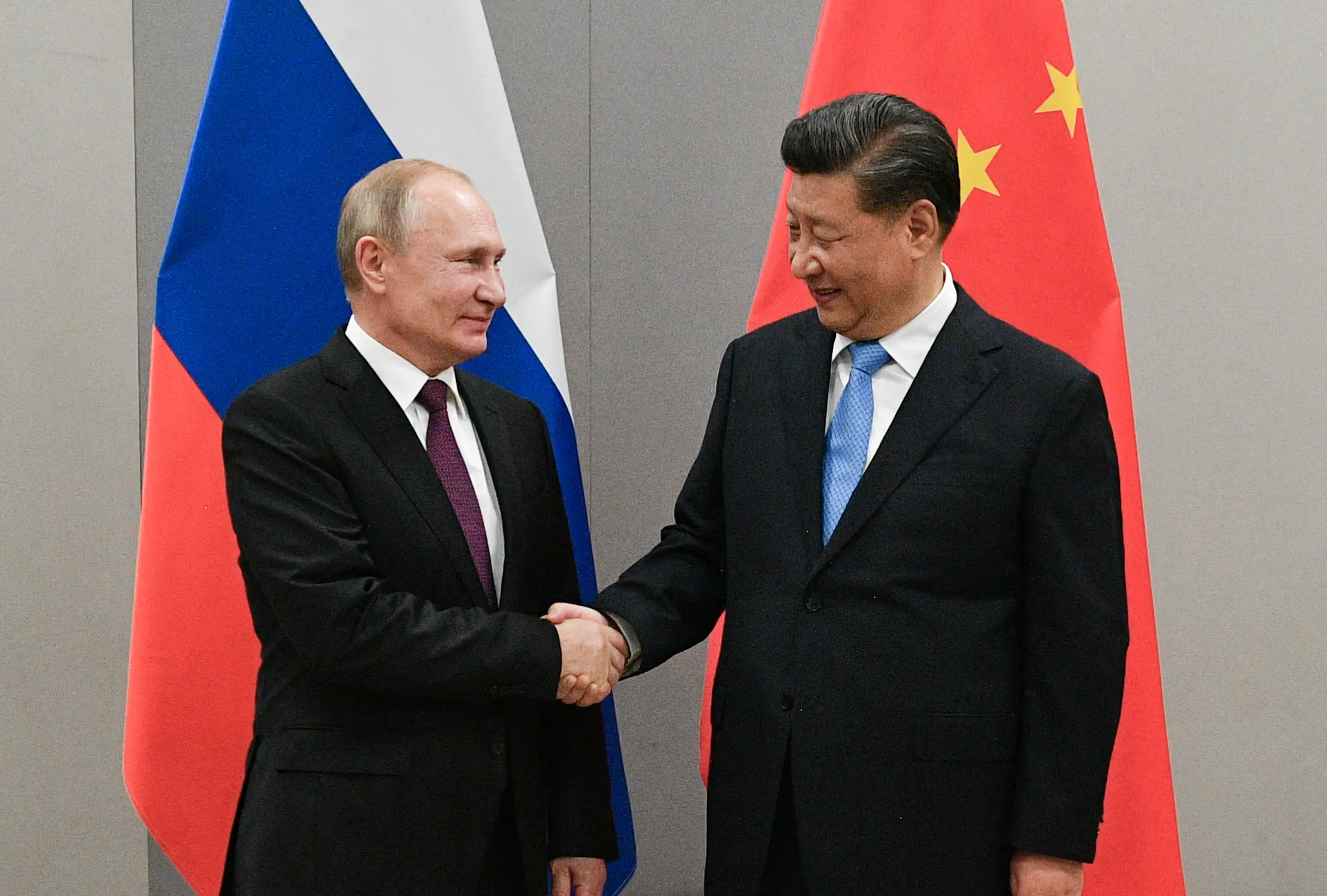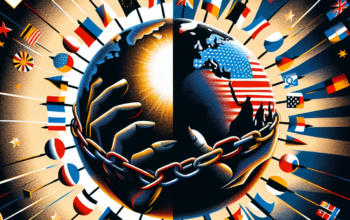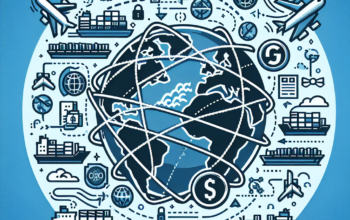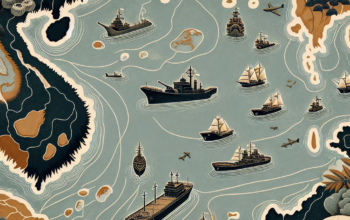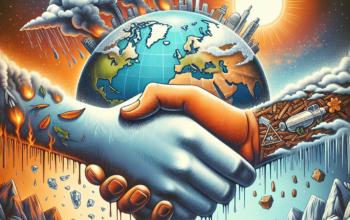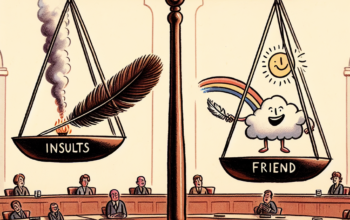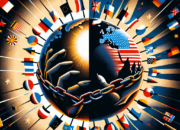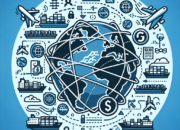China’s growing support for Russia since the invasion of Ukraine has reshaped the conflict and shifted the global balance of power. While Chinese leaders speak of neutrality and call for quick peace talks, the reality is more complicated. Since 2022, Beijing and Moscow have tightened economic, political, and military ties in ways that directly affect Ukraine’s security and chances for recovery.
Trade between China and Russia has skyrocketed, with record deals in energy, technology, and infrastructure. Reports confirm Chinese companies have supplied key technology and components that help fuel Russia’s war effort. These actions, paired with high-level diplomatic support and resistance to Western sanctions, give Russia vital lifelines and weaken international efforts to stop the fighting.
This deepening partnership means Ukraine faces an even tougher road ahead. China’s backing helps Russia sustain its campaign and limits the impact of Western pressure. As the China-Russia alliance grows stronger, Ukraine’s future—and the prospects for peace—become closely tied to decisions made in Beijing.
China’s Strategic Motives Behind Supporting Russia
China’s support for Russia since the Ukraine invasion isn’t just about friendship or shared history. It’s a careful calculation aimed at shaping the balance of power in Eurasia and beyond. China’s leaders talk about neutrality, but their actions reveal deeper motives, from diplomatic maneuvering to robust economic ties. This section breaks down how China balances its official stance with practical support and how both nations benefit from closer economic and energy cooperation.
Balancing Official Neutrality With Practical Alliances
 Photo by Alex P
Photo by Alex P
On paper, China insists it remains “neutral” in the Ukraine war. Chinese officials point to abstentions at the United Nations, regular calls for dialogue, and public statements that avoid blaming Russia for the conflict. Beijing repeats that it is “not a party” to the crisis, often criticizing Western sanctions and demanding respect for all countries’ sovereignty.
But away from the spotlight, China’s approach is more pragmatic and strategic:
- Diplomatic Cover: Chinese envoys regularly meet with Russian leaders, holding up a united diplomatic front and pushing back against Western narratives in global forums.
- No Condemnation: China has avoided direct criticism of Russia’s invasion, instead framing the war as a regional problem to be solved through negotiation.
- UN Abstentions: At key moments, China has abstained from UN votes that would isolate Russia, signaling quiet support while dodging direct confrontation with the West.
- Behind-the-Scenes Statements: In private talks, Chinese diplomats reportedly told EU officials that Beijing “cannot accept” a Russian loss in Ukraine. Their main concern: if Russia falters, the United States could shift its focus entirely to countering China, undermining Beijing’s own security.
China’s “neutrality” is, in practice, a shield for its real goal—protecting its position on the global stage by keeping Russia strong enough to distract and divide Western rivals.
Economic and Energy Cooperation
China and Russia now share some of the deepest economic ties in their history. This partnership is built on mutual need and shared goals, especially as both countries face isolation from Western markets.
Consider these facts:
- Record Trade: Bilateral trade hit around $245 billion in 2024, with China now accounting for over a third of Russia’s foreign trade. This is a leap from just a few years ago.
- Energy Flows: China is Russia’s top buyer of oil, gas, and coal—often at discounted rates due to Western sanctions on Moscow. About 75% of Russia’s energy exports now flow eastward.
- Machinery and Goods: With Western companies pulling out of Russia, Chinese firms stepped in. Russia now relies on China for electronics, vehicles, and industrial equipment.
- Infrastructure Projects: Joint projects, like the Power of Siberia 2 gas pipeline and new transport corridors, lock both economies together for the long haul.
- Financial Cooperation: The Chinese yuan has become more common in Russia’s cross-border deals, helping Moscow reduce its reliance on the U.S. dollar and skirt some sanctions.
These connections go beyond dollars and contracts. They help Russia keep its economy running and military supplied even under intense international pressure. For Beijing, the partnership delivers cheap energy, a steady export market, and a powerful partner to counterbalance U.S. influence. The alliance isn’t just practical—it’s a deliberate move to reshape the global order in their favor.
In summary, China’s support for Russia is a blend of calculated diplomacy and hard-nosed economics. Official neutrality masks a deeper partnership, with each side gaining strength from the other in a world that’s becoming more polarized by the day.
Forms of Chinese Support For Russia in the Ukraine Conflict
China’s support for Russia in the Ukraine conflict goes beyond diplomatic statements and trade statistics. While Beijing continues to promote itself as a neutral party calling for peace, the real-world impact of its policies tells a different story. Chinese companies, technology, and financial networks have become essential pillars propping up Russia’s ability to fight and weather Western sanctions. Understanding these forms of support is key to grasping why Ukraine’s future is so closely tied to decisions made in both Moscow and Beijing.
Military and Dual-Use Technology Supply
 Photo by Berendey_Ivanov / Andrey_Kobysnyn
Photo by Berendey_Ivanov / Andrey_Kobysnyn
China denies providing Russia with weapons, but the evidence of support for Russia’s military sector is mounting. Ukrainian and Western officials have traced a steady flow of Chinese-made parts and materials into the Russian war effort, often through dual-use goods—items with both civilian and military uses. Here’s what’s been discovered:
- Drone Components: Fragments from downed Russian drones, including the Geran 2 (an Iranian-designed model rebranded by Russia), have contained electronics and fuselage parts stamped “Made in China.” These drones play a central role in attacks on Ukrainian cities and infrastructure.
- Semiconductors and Electronics: Shipments of Chinese microchips, navigation systems, and other electronics have filled critical gaps left by Western export bans. Many of these components are essential for missile guidance, targeting, and secure communications.
- Nitrocellulose for Explosives: Chinese exports of nitrocellulose, a key ingredient in gunpowder and artillery shells, surged after Western sanctions tightened. In 2023 alone, over 1,300 tons were sent to Russia—up from nearly none before the invasion.
- Military-Grade Technology: China has supplied Russia with advanced systems, including parts for Su-35 fighter jets and S-400 missile defense platforms. These transfers are often camouflaged as civilian aerospace or industrial sales.
- Indirect Supply Chains: Many shipments travel through third-party countries or shell companies, obscuring their origins and making it harder for the international community to track or halt the flow.
The result is a Russian defense industry that can keep modernizing and producing at scale, despite being cut off from Western tech. China’s dual-use supplies have become indispensable to Russia’s military production—helping sustain the invasion and giving Moscow access to innovation and lessons learned on the battlefield.
Circumventing Western Sanctions
China’s role as Russia’s economic lifeline is as much about outsmarting sanctions as it is about direct trade. When sanctions hit, China stepped in with creative workarounds that keep Russian industries funded and supplied, while minimizing its own exposure to direct penalties.
Key ways China helps Russia bypass Western sanctions include:
- Third-Country Routing: Chinese goods often reach Russia through Central Asian countries like Kazakhstan and Kyrgyzstan. These nations have seen a spike in imports of machinery and electronics from China, which are then quietly redirected to Russia.
- Shell Companies and Opaque Networks: By using layers of shell companies and relabeling goods as civilian, Chinese exporters blur the lines of accountability. This tactic confuses investigators and makes international enforcement nearly impossible.
- Financial Channels: China and Russia have ramped up trade settled in yuan, avoiding the US dollar and Western banking systems. Domestic payment networks and barter transactions further reduce the risk of detection.
- Energy Exports: China buys Russian oil, gas, and coal at record levels, using specialized Chinese tankers and insurance to skirt price caps set by Western countries. These energy deals bring billions to Moscow, propping up its war budget.
- Logistics and Infrastructure: China’s Belt and Road Initiative has built roads, railways, and customs facilities across Central Asia. These corridors are now vital for moving goods that would otherwise be blocked by direct sanctions.
Here’s a snapshot of how this plays out:
- The EU recently found that 80% of sanctioned goods reaching Russia came via China or Chinese-managed routes.
- Over $300 million per month in Chinese dual-use items, including drone parts and military electronics, now flow to Russia, often under the radar.
- Russian exports to China grew to $111 billion in 2023, while Chinese imports to Russia hit $129 billion, reflecting their deep economic interlock.
These strategies undermine Western efforts to isolate Russia and showcase China’s growing ability to build global trade networks insulated from US and EU pressure. By perfecting these methods, China isn’t just helping Russia—it’s also preparing for a future where it might face similar economic warfare.
China’s support, though rarely overt, is now built into the machinery of Russia’s war effort. Whether through invisible, dual-use trade or clever sanction circumvention, Beijing’s choices send ripples far beyond the battlefield. Understanding these forms of support helps explain why Ukraine’s fate now depends as much on Beijing as on Moscow.
China’s Diplomatic Narratives and Peace Proposals
China’s diplomatic outreach on the Ukraine conflict has drawn global attention, not only for its official peace proposals but also for the way it frames the war through media messaging. While Beijing speaks often about neutrality and dialogue, its actions and communications paint a more complicated picture. Understanding China’s approach to diplomacy and public opinion helps explain why its support for Russia is such a critical factor for Ukraine’s future.
The Twelve-Point Proposal and Global Diplomacy
 Photo by Hugo Magalhaes
Photo by Hugo Magalhaes
In February 2023, Beijing rolled out its Twelve-Point Peace Proposal for Ukraine, aiming to position itself as a mediator in the crisis. The plan is built on broad principles, such as the need to respect sovereignty, halt hostilities, resume dialogue, and avoid the use of nuclear or chemical weapons. It also calls for keeping global supply chains stable, protecting civilians, and supporting post-war reconstruction.
Key features of the proposal include:
- Respect for Sovereignty: Calls for respecting all countries’ territorial integrity but avoids directly addressing Russia’s occupation of Ukrainian land.
- Ceasefire and Dialogue: Urges both sides to end fighting and return to peace talks, without setting clear terms for negotiations.
- Rejection of Cold War Thinking: Frames the conflict as the result of outdated bloc politics, subtly blaming NATO and the West for escalating tensions.
- Opposition to Sanctions: Rejects what it calls “unilateral sanctions,” targeting Western efforts to pressure Russia economically.
- Grain and Humanitarian Aid: Highlights the importance of global food security and prisoner exchanges.
China’s diplomatic activity goes beyond the peace plan. It has worked with countries like Brazil, which issued its own six-point proposal, to show a joint front. These moves are designed to appeal to the Global South, where skepticism about Western intentions runs deep.
Yet, international reactions remain mixed at best:
- Western Criticism: The U.S. and European Union see China’s plan as vague, lacking mechanisms to hold Russia accountable, and tilted toward Moscow’s interests. Many point out that the proposal doesn’t demand Russia withdraw its troops or even mention the word “war.”
- Moscow’s Response: Russia cautiously welcomed the plan, as it aligns with its demand for recognition of territory it now controls.
- Kyiv’s Stance: Ukraine remains wary, open to talk but insisting on full restoration of its borders before any meaningful dialogue.
Critics believe China’s initiative is more about shaping perceptions than solving the crisis. The plan’s ambiguity protects Beijing’s strategic interests, lets it claim neutrality, and helps counter Western narratives. Even so, the proposal has succeeded in keeping China at the center of global diplomatic conversations, reinforcing its image as a power broker, especially in developing regions.
Media and Messaging: Shaping Public Opinion
China’s approach to shaping public opinion on the Ukraine conflict is both deliberate and disciplined. While officials maintain a stance of neutrality, state-run media and official spokespeople consistently echo Russian talking points, portraying Moscow as reacting to Western provocation and expansion.
State media narratives focus on:
- Blaming the West: Coverage leans heavily on U.S. and NATO responsibility for the conflict, often downplaying or ignoring Ukrainian perspectives.
- Amplifying Russian Stories: Chinese outlets routinely cite Russian sources, sometimes spreading unverified claims and misinformation, such as stories about biolabs or downplaying reports of civilian casualties.
- Promoting Peace Broker Image: By repeating calls for negotiation and dialogue, Chinese media reinforces the idea of Beijing as a responsible mediator, even while it quietly supports Russian interests.
At home, strict censorship rules prevent critical discussion of Russia’s actions or the Chinese government’s stance. Any content that challenges the official narrative is quickly suppressed. On Chinese social media platforms, an ecosystem of “amateur” creators further amplifies pro-Russian and anti-Western messages, often pushing conspiracy theories and patriotic slogans.
Key tactics in shaping opinion include:
- Censorship of Dissent: Domestic outlets are barred from criticizing Russia or exploring Ukrainian suffering.
- Digital Propaganda: On platforms like Bilibili and Weibo, anonymous accounts flood discussions with supportive messages for Russia and harsh criticism of the West.
- Global Messaging: Internationally, Chinese diplomats and media present Beijing as a neutral peacemaker, but in practice, their messaging aligns closely with Moscow’s political goals.
This coordinated media effort achieves several objectives:
- Consolidates Domestic Support: By presenting the conflict as a result of Western aggression, the government ensures a unified national stance.
- Bolsters Global South Influence: The anti-Western tone resonates with countries wary of U.S. and European power, helping China expand its influence.
- Shields Against Criticism: By blaming outside actors, Beijing avoids uncomfortable scrutiny of its own policies toward Russia and Ukraine.
China’s mix of diplomacy and information control means its peace proposals and public messaging are part of a larger effort to shape the future of the conflict—and the world’s understanding of where China stands.
Implications for Ukraine’s War Effort and Long-Term Future
China’s support for Russia has become a major factor shaping not just the current conflict, but also Ukraine’s prospects for stability and independence. As Beijing’s economic, technological, and diplomatic backing for Moscow deepens, Ukraine’s ability to fight and recover faces new hurdles. This section breaks down how China’s actions impact Ukraine both on the battlefield and at the negotiating table.
Prolonging the Conflict and Straining Ukraine’s Resources
One of the most direct effects of China’s support for Russia is the way it helps keep the war going, making Ukraine’s struggle more difficult and expensive.
 Photo by Mykhailo Volkov
Photo by Mykhailo Volkov
Why does Chinese backing matter so much?
- Boosts Russia’s staying power: Chinese companies quietly supply Russia with critical components, including microelectronics, drone parts, and other military tech. This flow enables Russia to replace and upgrade lost equipment, sidestepping many Western export bans.
- Strengthens Russia’s economy: With Western markets largely closed, China buys Russian oil, gas, and coal at high volumes, giving Moscow the cash it needs to fund its war budget. These energy deals, paired with new trade routes and financial systems, cushion Russia from economic pain.
- Complicates Western aid: As China helps Russia develop workarounds for sanctions, it blunts the impact of Western pressure. This means Ukraine must fight a better-armed enemy with deep pockets, even as some aid from Western countries faces delays or political debate.
On the ground, the consequences are clear:
- Russia continues to launch large-scale missile and drone attacks, often using technology sourced from or built with Chinese parts.
- The Russian military is modernizing faster than many predicted, using Chinese-made vehicles, sensors, and communications gear to adapt to losses.
- The war’s duration drives up costs for Ukraine, draining manpower, ammunition, and money at a pace that’s hard to sustain.
Ukraine’s future military strength depends on several factors:
- Finding new ways to defend against cheap, mass-produced drones and missiles.
- Keeping supply chains resilient despite Russian strikes and economic disruption.
- Encouraging Western allies to maintain or increase support, even as Russia’s alliance with China drags the conflict out.
The longer Russia can fight, the more Ukraine’s resources stretch thin—and the harder it gets to plan for peace or rebuild.
The Diplomatic Challenge for Ukraine and Its Allies
China’s diplomatic moves introduce a different kind of challenge for Kyiv and its partners. While publicly calling for peace and negotiation, Beijing has firmly signaled in private that it cannot accept a Russian defeat.
How does this affect Ukraine’s position?
- Limits diplomatic options: China presents itself as a peacemaker, but its proposals avoid blaming Russia or demanding the return of occupied territories. Ukraine faces pressure to consider solutions that don’t meet its goals for sovereignty and territorial integrity.
- Erodes Western unity: China’s outreach to countries in Europe, Africa, and the Global South draws attention away from Western narratives. This could weaken international support for Ukraine, making it harder to isolate Russia or sustain coordinated sanctions.
- Shifts global opinion: In many parts of the world, China’s messaging blames NATO and the West for the conflict. This soft-power push wins sympathy for Russia’s position and muddies the waters on what Ukraine is fighting for.
For Ukraine and its allies, countering China’s influence means:
- Strengthening alliances: NATO and EU countries need to present a united front and invest in long-term aid for Ukraine, even as economic and political fatigue sets in.
- Engaging the Global South: Kyiv must work harder to share its story and build relationships with countries that might otherwise be swayed by Chinese or Russian narratives.
- Calling out double standards: Western diplomats have to challenge Beijing’s claim of neutrality, pointing to evidence of Chinese support for Russia and the real-world consequences for Ukraine.
Ukraine’s ability to shape its own future depends on more than just military victories. It requires smart, sustained diplomacy to prevent China from redefining the terms of peace—and to keep the world focused on Ukraine’s right to decide its destiny.
Conclusion
China’s support for Russia has strengthened Moscow’s ability to continue its war in Ukraine, changing both the pace and possible outcomes of the conflict. By providing economic lifelines, military technology, and diplomatic backing, Beijing has helped Russia sidestep Western efforts to pressure or isolate it. This support adds new risks for Ukraine’s sovereignty and security, while also shaping the broader diplomatic climate in Europe and beyond.
The partnership between China and Russia is set to influence Ukraine’s future for years to come. As global power centers shift, monitoring how these ties evolve will be key for anyone invested in Ukraine’s recovery and independence.
Stay informed about the changing relationships among China, Russia, and Ukraine. Share your thoughts below and help keep the conversation going.
